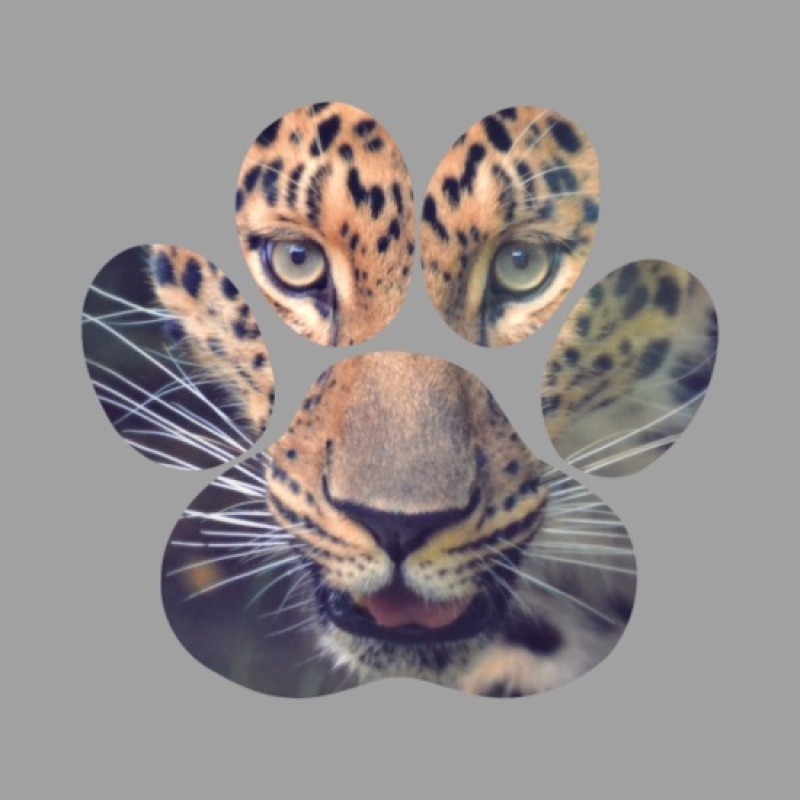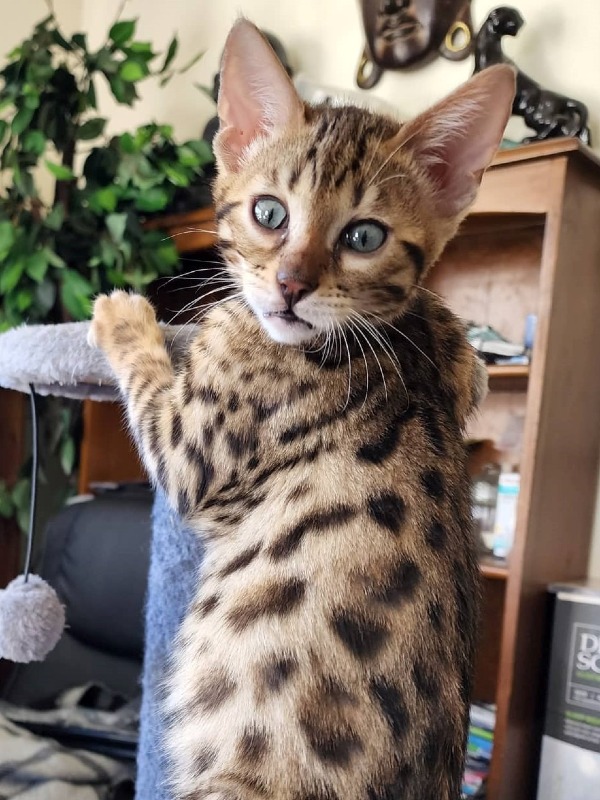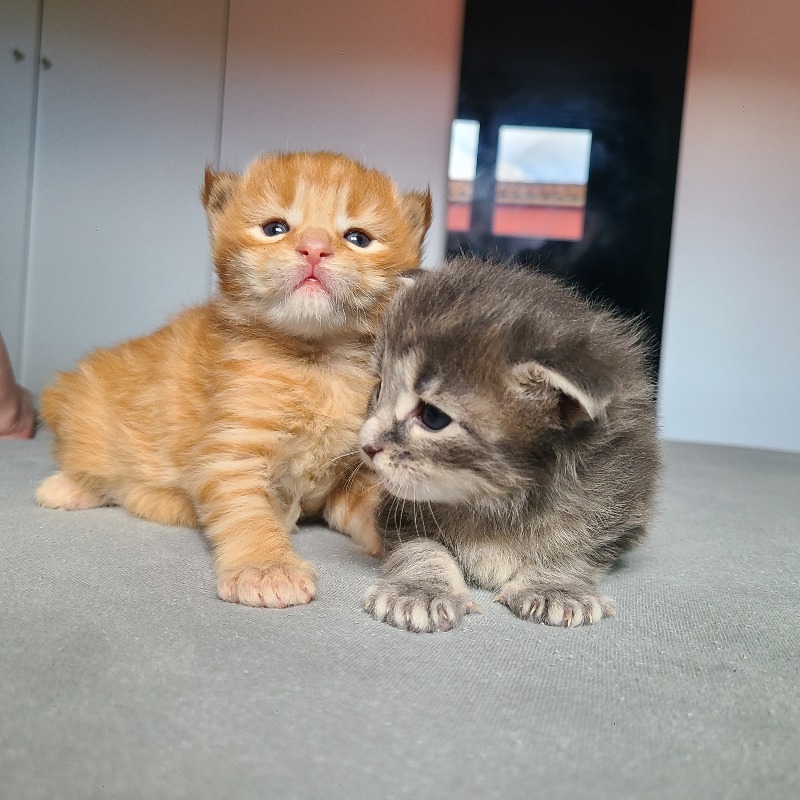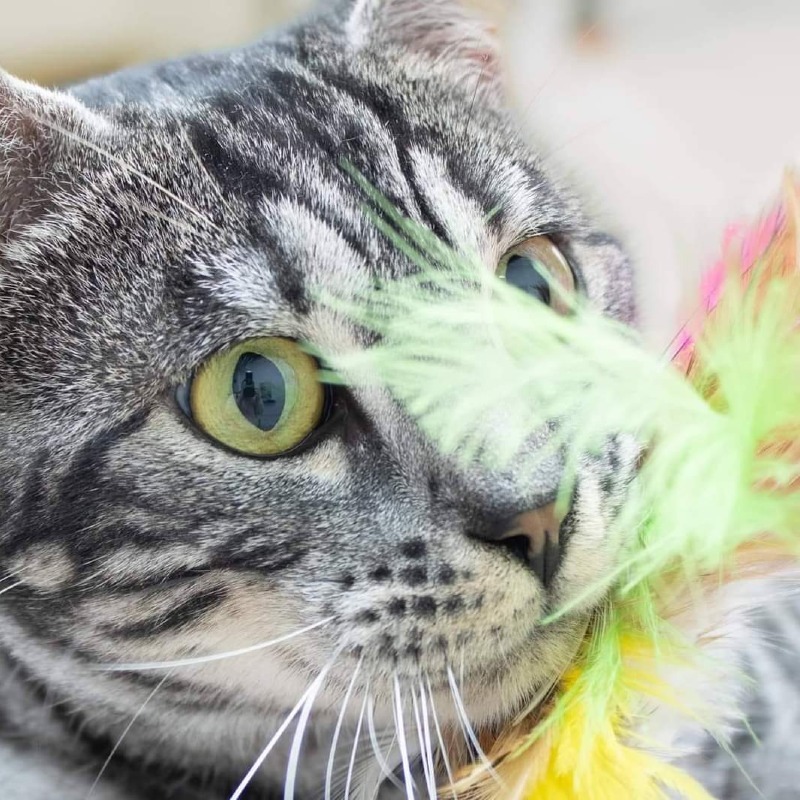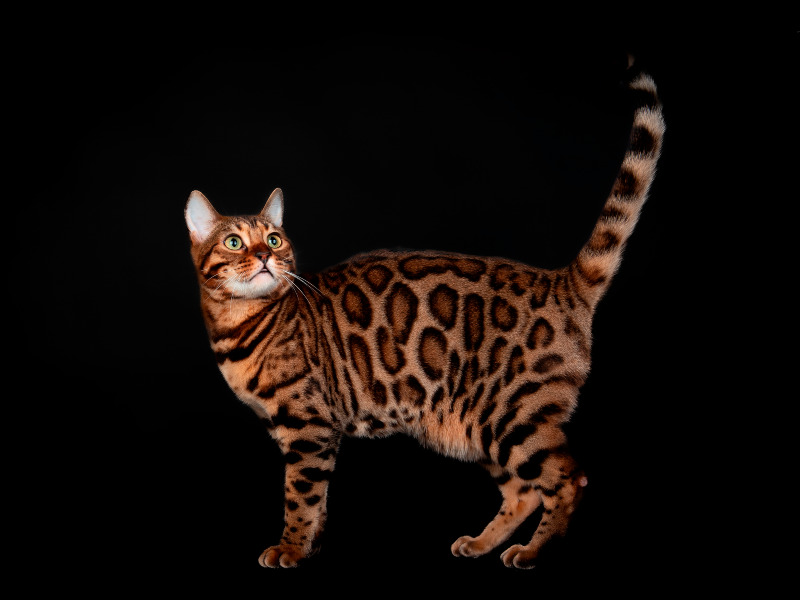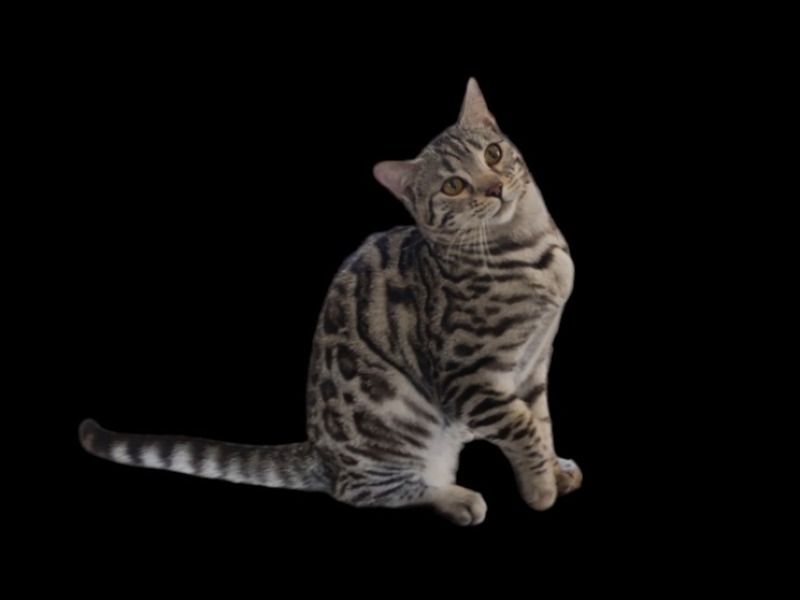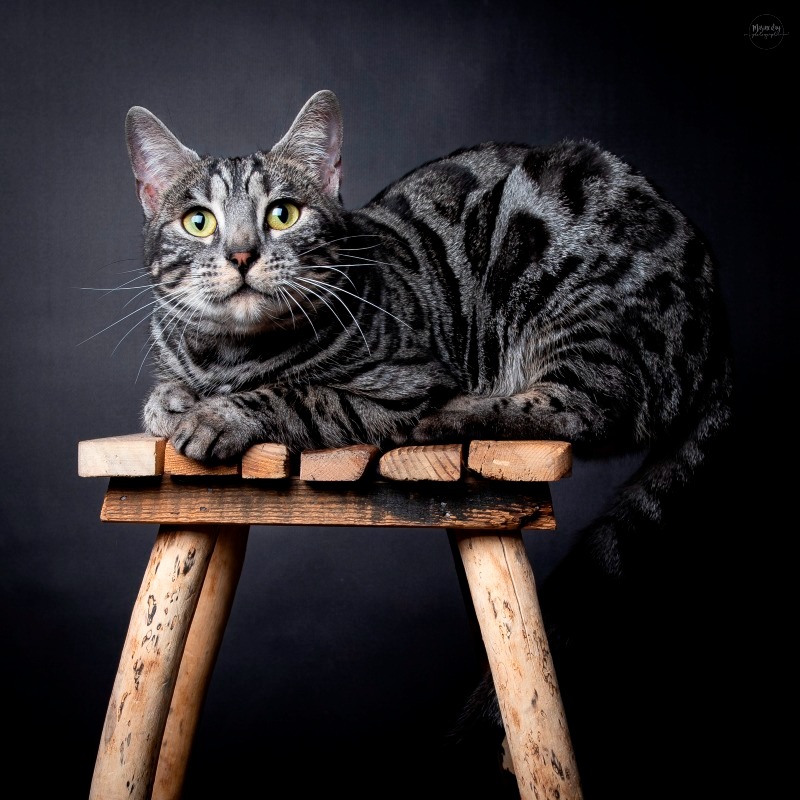Bengal
Autres noms : Bengali cats, Leopard cats
Discover the Bengal cat, a fascinating breed with a spotted coat reminiscent of a leopard, combining wild beauty and a loving temperament. An ideal companion for lovers of active and social felines!
Awareness of acquiring an animal
Adoption and breeding of cats should always be guided by a sincere attachment to the animal and an understanding of its specific needs. Whether for leisure or passion, it is essential to provide a safe, enriching, and suitable environment. Avoid any impulsive acquisition that could harm their well-being. Cats require attention, regular healthcare, and a secure space. Commit to providing them with a quality life by being a conscientious and informed owner or breeder.
To learn more about animal welfare, we invite you to consult our FAQ by clicking the button below:
Origins and history
The Bengal cat breed finds its origins in the crossing between the Asian leopard cat and domestic cats in the 1960s. This project was initiated by Jean Sugden, an American breeder, who aimed to create a cat with a spectacular coat and wild characteristics while maintaining a domestic temperament.
The first hybrids were obtained by crossing a male leopard cat with a domestic female. These early cats had a striking appearance due to their spotted and marbled coats, reminiscent of wild felines. However, the first hybrid generations were not fully sociable, and additional efforts were needed to stabilize the breed and improve its temperament.
Over the decades, many breeders have worked on enhancing the breed by crossing Bengals with other domestic cats, thus better integrating their behaviors and developing a recognized breed standard. Today, the breed is appreciated for its unique aesthetic and affectionate character, combining wild beauty with a gentle demeanor.
Physical characteristics
The Bengal cat is a unique breed characterized by its wild and distinctive appearance. Its coat is one of its main features. The fur is generally short, dense, and glossy, giving it a silky look. The spots, marbling, and patterns are particularly remarkable, resembling the fur of a leopard or other wild felines. The patterns can range from small isolated spots to broader marbling, and the colors can vary from gold to brown, including shades of gray and blue.
The size and musculature of the Bengal cat are also impressive. These cats are often medium to large, with a robust and muscular build. Their bodies are well-proportioned, combining strength and agility. The legs are sturdy, and the feet are generally round and wide. Their heads are triangular in shape, with full cheeks and a slightly rounded forehead. The eyes, often round and bright, can be of different hues, ranging from green to gold, which adds to their beauty.
Finally, the ears are medium-sized, wide at the base and slightly rounded at the top, which contributes to their alert and inquisitive expression. This combination of physical attributes gives the Bengal cat an air that is both elegant and powerful, while maintaining a fascinating appearance that draws attention.
Character
The Bengal cat breed is particularly well-known for its distinctive character traits that make it a fascinating companion. Generally, these felines are very active and curious. They require physical and mental stimulation, which often makes them playful and mischievous. Their boundless energy drives them to explore their environment, and it is essential to provide a variety of toys and activities to channel this liveliness.
They also possess an affectionate temperament. Bengals tend to form strong bonds with their owners, often seeking human company. They are loyal and can be very sociable, enjoying the presence of other animals and children, which makes them ideal companions for dynamic families.
On the other hand, their intelligence is a notable trait. These cats know how to solve problems and can learn tricks or behaviors, which requires stimulating interaction. They are often described as "dog-like cats" due to their ability to socialize and interact proactively. In summary, the Bengal cat breed stands out for its combination of energy, affection, and intelligence, providing an enriching experience for those who welcome them.
Life expectancy
The lifespan of a Bengal cat generally ranges between 12 and 16 years. This range can vary depending on various factors, including genetics, diet, healthcare, and lifestyle. Optimal overall health and proper nutrition can contribute to a longer lifespan.
Bengals are often considered a robust breed, but they can be prone to certain hereditary diseases, such as heart and kidney problems. Therefore, it is crucial to choose a reputable breeder who performs genetic testing to minimize these risks. Additionally, regular health check-ups at the veterinarian are essential to detect and address any issues promptly.
The environment in which a cat lives is also a major factor in its lifespan. Indoor cats tend to live longer than those with outdoor access, due to reduced exposure to dangers such as accidents, infectious diseases, and predators. Providing a stimulating and secure environment, along with proper care, can significantly enhance the longevity and quality of life of these felines.
Exercise and activity needs
The Bengal is an energetic and active cat breed that requires a relatively high level of exercise to maintain its physical and mental health. Cats of this breed are often very curious and playful, which drives them to explore their surroundings. To meet their needs, it is essential to provide interactive playtime, such as sessions with feather toys, lasers, or balls.
In addition to play, it is beneficial to provide stimulating environments. Cat trees, shelves, and perches can help satisfy their climbing instinct and encourage exploration. These setups also help prevent boredom, which can lead to destructive behaviors.
It is advisable to schedule regular structured playtime and interaction with humans. A daily exercise routine of about 30 minutes to an hour is ideal. By incorporating these activities, owners can ensure the physical and mental well-being of their feline companion while strengthening the emotional bonds between them.
Recommended diet
The diet of Bengal cats is crucial for their health and well-being. Due to their wild ancestry, these cats require a diet rich in animal proteins. A meat-based diet is essential as it meets their specific nutritional needs. Opt for high-quality meat-containing foods, such as chicken, beef, or fish, to ensure an adequate supply of essential amino acids.
Bengals are also sensitive to their digestive health. It is advisable to incorporate fiber into their diet, which helps maintain a healthy digestive system. Vegetables like carrots or peas can be included in small amounts to enrich their diet. Avoid excessive grain content, as these cats have a low need for carbohydrates.
Finally, hydration is another key element. Ensure that your cat has access to fresh water at all times. Some people choose to include wet food in their Bengals' diet, which can also help increase their water intake. Ultimately, a well-balanced and appropriate diet is essential to preserving their health and vitality.
Training and obedience
Training and educating a Bengal cat requires an approach tailored to its unique personality. This type of cat is often intelligent, curious, and active, making it a good candidate for learning various behaviors. To begin with, it is essential to create a stimulating environment. Using interactive toys and scratching posts can help channel their energy while keeping them engaged.
Early socialization is crucial. Exposing a Bengal to different environments, people, and animals from a young age helps to develop a well-balanced and confident cat. Regular play sessions strengthen this bond and promote positive behavior. It is recommended to use positive reinforcement techniques, such as rewards and petting, to encourage desired behaviors.
Establishing a routine is also beneficial. Consistency and predictability help the cat understand what is expected of it. However, patience is key. Each cat has its own learning pace, and the key is to keep training sessions short and enjoyable to maintain their interest and motivation.
Behavior with children
The behavior of Bengal cats towards children is generally positive, making them interesting companions for families. Their active and curious nature encourages them to interact with their young housemates. These cats are often known for their boundless energy, which allows them to easily adapt to the sometimes boisterous play of children. They enjoy exploring their environment and participating in playful activities, fostering a dynamic relationship between them and the children.
However, it is essential to supervise interactions between the cat and the children, especially when they are very young. While Bengals are typically sociable, each animal has its own temperament, and some may be more sensitive or reserved than others. Teaching children to respect the cat's space and to interact calmly can help establish a harmonious relationship.
Furthermore, Bengals have a need for mental and physical stimulation. To integrate them sustainably into a family dynamic, it is advisable to provide them with appropriate toys and outlets for their curiosity. This not only makes their daily life enriching but also helps to prevent undesirable behaviors related to boredom or anxiety.
Compatibility with Other Animals
The compatibility of Bengal cats with other domestic animals is a topic that piques the interest of many potential owners. This breed is often described as active, curious, and sociable. These personality traits can influence how they interact with other animals, including dogs and other cats.
Bengal cats tend to be very playful and energetic. This can make them compatible with active dogs that enjoy playing and running. However, it is essential to ensure that the dog has a gentle temperament and is accustomed to the presence of cats. A careful and supervised introduction is crucial to avoid misunderstandings or territorial behaviors.
Regarding their interaction with other cats, Bengals are generally friendly. However, their dominant nature can sometimes lead to tensions, especially if another cat is more timid or less confident. Early socialization and attention to the dynamics in the home are necessary to ensure harmonious cohabitation.
In summary, Bengal cats can adapt well to an environment with other animals, but this largely depends on the individual personalities of each animal and the efforts made to promote positive integration.
Grooming needs
The Bengal cat breed has specific grooming and maintenance needs. Their coat is short and dense, which makes it easier to care for compared to other long-haired breeds. However, regular brushing, ideally once a week, helps to remove dead hair and reduce the formation of hairballs. It also stimulates the skin and distributes natural oils, keeping the coat shiny.
Regarding bathing, frequency should be limited, as excessive bathing can dry out the cat's skin. An occasional bath when necessary is usually sufficient. It is advisable to use a mild shampoo specially formulated for cats to preserve their coat.
Nail care is also crucial. It is recommended to check their nails regularly and trim them if necessary, which helps to prevent injuries and damage in the home. Finally, good dental hygiene is essential. Regular brushing with a toothpaste designed for cats helps to prevent common dental issues.
Health
The Bengal cat breed is appreciated for its aesthetic appearance and active behavior. However, it is important to be aware of certain health concerns related to these animals.
First of all, Bengals may be predisposed to genetic diseases. Some conditions, such as hypertrophic cardiomyopathy, a heart condition, may be more common in this breed. Therefore, it is crucial to ensure that breeders perform appropriate screening tests on breeding stock to minimize the risk of transmission of these diseases.
Next, diet plays a crucial role in the health of Bengals. They require a diet high in protein and amino acids, suitable for their high energy levels. Poor nutrition can lead to obesity, which is a common health issue in cats in general.
Finally, physical activity is essential for this breed. Bengals are natural hunters and require a stimulating environment. Their mental and physical well-being depends on constant interaction, whether through play or exploration. An active lifestyle can prevent problems such as anxiety and obesity. In summary, paying particular attention to genetic health, diet, and exercise can help ensure a long and healthy life for these animals.
Environment and habitat
The Bengal cat is renowned for its wild appearance and unique characteristics. Originating from crosses between domestic cats and the Asian leopard cat, this breed evokes the stunning patterns of wildlife. In terms of environment, Bengals thrive in various spaces, whether in houses or apartments, as long as they have enough stimulation and exercise.
In living spaces, it is essential to provide an environment rich in play and challenges. Bengals are natural climbers and enjoy perches, cat trees, and interactive toys. They require structured environments that encourage them to explore and hunt, thus replicating their natural instincts.
Regarding their outdoor habitat, a secure yard would allow these felines to enjoy their adventurous tendencies without the risk of escaping or encountering dangers. In summary, an enriched and secure space is crucial for the well-being of this dynamic and curious breed.
Name ideas
Choosing a name for a Bengal cat can be both a joyful and delicate moment. This choice should reflect the unique personality of the breed while highlighting its character. Bengals are often described as energetic, curious, and intelligent. Therefore, it is wise to choose a name that evokes these traits while being easy to pronounce and remember.
To choose a good name, start by observing your cat's behavior and appearance. The spotted or marbled patterns of their coat, their agility, and liveliness can inspire ideas. Also, think about cultural elements, nature, or fictional characters that capture the indomitable spirit of Bengals. A name that evokes a strong emotion or image will often be more memorable.
Here are some name suggestions for Bengal cats: Tigris, Kimo, Spotty, Zuri, Simba, Luna, Java, Marble, Zephyr, Tiga, Sienna, Neko, Pixel, Moka, and Freckles. These names, with their varied sounds and distinct character, should suit the spirit of this fascinating breed.
Average purchase price
The price of a Bengal cat can vary significantly based on several factors. Generally, prices range between 1000 and 3000 euros. Key factors include the breeder's reputation, the animal's lineage, and the quality of its physical traits. Cats from champion lines or with show-quality characteristics can reach higher prices.
Geographic location can also influence the cost. In certain areas, the demand for this breed may be higher, leading to increased prices. Additionally, breeders who take the time to properly socialize and care for their animals may charge higher prices due to their responsible and ethical practices.
Finally, it is essential to consider the additional expenses related to acquiring a cat, such as vaccinations, spaying or neutering, and basic supplies. These costs can add to the initial budget, but they are crucial for the health and well-being of the animal. Overall, investing in a Bengal cat requires careful thought and adequate financial preparation.
Expenses
Owning a specific breed of cat, like this one, entails monthly expenses that can vary based on several factors. Generally, the costs associated with food are among the most significant. A quality diet, tailored to the nutritional needs of this breed, can cost between 30 and 80 euros per month. It is essential to prioritize products that are rich in protein and free from lower-quality additives.
Veterinary fees represent another significant portion of the budget. An annual consultation can amount to about 50 to 100 euros, not including vaccinations and potential preventive treatments. For a breed that may be prone to certain health conditions, setting aside a monthly budget of 20 to 30 euros for preventive care and emergencies is advisable.
Finally, it is important to consider expenses related to litter, accessories, and toys. Litter typically costs around 15 to 30 euros per month, and one should also budget for toys and other supplies, which could add another 20 to 50 euros monthly. When totaling these elements, the monthly expenses for a cat of this breed reasonably range between 100 and 250 euros.
Destination and usage
Bengal cats are increasingly sought after as pets due to their fascinating appearance and dynamic personality. Originating from the crossbreeding of a domestic cat and an Asian leopard, these felines stand out with their spotted or marbled coats, reminiscent of wild patterns. Their exuberant beauty attracts many cat enthusiasts eager to bring a touch of biodiversity into their homes.
As pets, Bengals are characterized by their active and curious nature. They require a stimulating environment filled with interactive toys and spaces to climb and explore. These cats are often described as playful and energetic, frequently engaging in play with their owners. Their intelligence allows them to learn tricks and solve puzzles, further strengthening the bond with their human families.
Bengals are also known for their sociability. They generally get along well with other pets, making them an ideal choice for households with multiple animals. Their affectionate personality and tendency to follow their owners make them devoted companions. In summary, the Bengal cat combines beauty, intelligence, and sociability, making it an increasingly popular choice as a pet.
Legislation and regulation
Legislation regarding Bengal cats varies significantly from country to country. In some countries, their breeding is fully permitted, and they are valued as pets due to their unique appearance and sociable personality. Breeders often have to comply with animal welfare standards and regulations concerning breeding.
Conversely, in certain regions, the legislation is more restrictive. For example, some states or countries prohibit the importation and sale of certain generations of this breed due to concerns related to their hybrid origin. These restrictions aim to preserve local wildlife and prevent issues of uncontrolled hybridization. Therefore, owners need to familiarize themselves with local legislation to ensure they comply with all legal requirements.
Animal protection organizations are also active in raising awareness about the responsibility of pet ownership. They encourage responsible adoption and the selection of ethical breeders. Education about the specifics of this breed is essential to ensure their well-being and that of animals in general.
Official recognition
The official recognition of the Bengal cat breed varies significantly from country to country, reflecting different approaches to the regulation and validation of feline breeds. In countries like the United States and Canada, this breed is widely accepted and recognized by cat organizations such as the International Cat Association and the Cat Fanciers' Association. These institutions establish breed standards that help promote health and desired characteristics.
In Europe, the situation is more varied. Some countries, like France and Germany, have recognized this breed through cat federations that adhere to strict quality standards. Cat shows in these countries regularly feature Bengal cats, thereby contributing to their visibility and popularity.
Conversely, in other regions, recognition may be limited. In some Asian or African countries, the breed is not yet officially recorded, meaning that breeders and owners may encounter obstacles in obtaining certifications or participating in competitions. This can also influence public perception of the breed, resulting in variable demand depending on the region.
In summary, the recognition of the Bengal breed is uneven on a global scale, often linking breed standards to cultural, legal, and economic issues.
Pedigrees
To obtain a pedigree for a Bengal cat, there are several recognized registries and clubs that ensure the traceability and quality of bloodlines. Among the most notable is the International Feline Federation (FIFe), which is one of the main organizations in Europe. This federation establishes strict breeding standards and allows breeders to register their cats, thus guaranteeing the purity of the bloodlines.
Another renowned registry is the International Cat Association (TICA). TICA is known for its recognition of breeds and also offers registration and pedigree opportunities for Bengals. Breeders wishing to participate in cat shows can register with this organization.
Additionally, the Cat Fanciers' Association (CFA) is another entity that plays a key role in the registration of Bengals. This club provides standardization criteria and organizes competitions, which enhances the reputation of serious breeders.
It is essential for potential buyers to ensure that their cats are registered with these clubs or registries to guarantee the authenticity and quality of their animal.
Prohibitions
The Bengal cat breed is valued for its distinctive coat and dynamic temperament. However, several countries impose restrictions or bans regarding their breeding and ownership. These measures are often motivated by concerns related to wildlife conservation or animal welfare considerations.
In some European countries, such as Belgium and Italy, laws limit the ownership of Bengal cats, particularly beyond a certain generation. These regulations aim to prevent uncontrolled crossing with wild species, due to the breed's wild heritage. Authorities worry that this could harm local biodiversity.
Other regions, like certain states in the United States, have similar restrictions, where permits are required to own these felines. The rules vary from state to state, making it essential for potential owners to inquire about local legislation. In summary, while this breed is appreciated, the legislative contexts surrounding its breeding reflect concerns about their potential impact on ecosystems and domestic animals.
Breeders of Bengal
Want to see more breeders of Bengal?
Check out the page of our directory listing all breeders of BengalClassified Ads of Bengal
Breed clubs of bengal
No of bengal breed clubs are currently registered on Preeders.
If you would like to highlight your breed club, sign up for free now and be the first to appear on this page.

